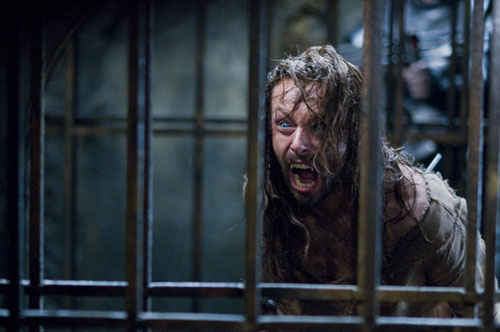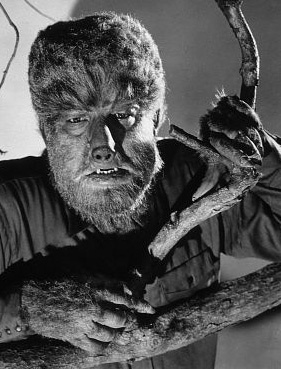
The film franchise that successfully combines vampires and werewolves and which also involves a romantic element hit the theaters once again last weekend and did fairly well in box office returns. I’m not talking about the second installment in the TWILIGHT series, but rather, UNDERWORLD: THE RISE OF THE LYCANS. This latest and perhaps last chapter in the UNDERWORLD narrative is something of a prequel, taking the viewer to a time before the first film’s narrative in order to provide an exploration of how the lycans (short for lycanthropes – i.e., werewolves) broke from partnership and service to the vampires, lauching an ongoing warfare between the two monstrous species.

This film will not be the only one to explore werewolves in 2009 with November representing a furry month that will include a fresh remake of THE WOLF MAN starring Benicio del Toro and featuring makeup by Rick Baker, and NEW MOON, the next film in the TWILIGHT series set to explore the conflict between vampires and werewolves only hinted at in the first film. But while many of the classic monsters immortalized in film have been the focus of popular and academic exploration, especially the vampire and Dr. Frankenstein’s creature, like the mummy, the werewolf has received comparatively little exploration.
Gordon Melton’s encyclopedic Vampire Book discusses the ancient origins of the werewolf in the folklore of various peoples around the world. The werewolf myth is part of a broad collection of myths in cultures with stories of human transformations into various types of animals. One of the oldest comes from ancient Greek mythology, with the word Lycaon from which we derive the term “lycanthropy.” Europe has been the source of some of the most influential folklore in Hollywood horror’s depictions of the werewolf, which reached a peak in the Middle Ages when lycanthropy was attributed to satanic influence along with witchcraft and sorcery. Melton also notes that in the mythic and literary history of various creatures in mythology that werewolves and vampires crossed paths in the past long before Hollywood cinema thrust the creatures together.
In terms of literary development, the werewolf appeared in three novels in the nineteenth century, with George W. M. Reynold’s Wagner the Wehrwolf recognized as one of the most significant. However, it was Guy Endore’s 1934 novel The Werewolf of Paris that would attract the most attention and become influential in the cinematic development of werewolf mythology. Endore’s book (or at least its title) was the inspiration for Universal Pictures’ first exploration of the lycanthrope in THE WEREWOLF OF LONDON.

However, it was Universal’s next film, THE WOLF MAN with Lon Chaney, Jr., that would cement the werewolf in popular culture so that the creature would become an iconic figure. This film would become something of a template for Western audiences in their understanding of werewolf mythology, with subsequent films providing deviations and modifications from this basic narrative core. As David Skal describes the impact of THE WOLF MAN and the subsequent werewolf films derived from this classic in the development of the mythology, “The Wolf Man’s saga was the most consistent and sustained monster myth of [World War II], beginning with the first year of America’s direct involvement, and finishing up just in time for Hiroshima.”
We might also remember that, UNDERWORLD’s pairing of vampires and werewolves is not the first time this has taken place in film. 1943’s THE RETURN OF THE VAMPIRE by Columbia Pictures did so, as did three films by Universal through the mid to late 1940s.
2009’s two films exploring the werewolf is significant for this horror creature, but it still falls slightly short in comparison with 1981, a year that Marco Lanzagorta calls “The Year of the Wolf” due to the release of three werewolf pictures that year including THE HOWLING, AN AMERICAN WEREWOLF IN LONDON, and WOLFEN. The werewolf may not be as popular as the vampire or the zombie in popular culture, but perhaps this year’s exploration of the transforming beast from within indicates that we still find the creature fascinating as it provides us with yet another facet of exploring the submersed dark side of human nature that surfaces all too frequently without the need for a full moon or gypsy curses.